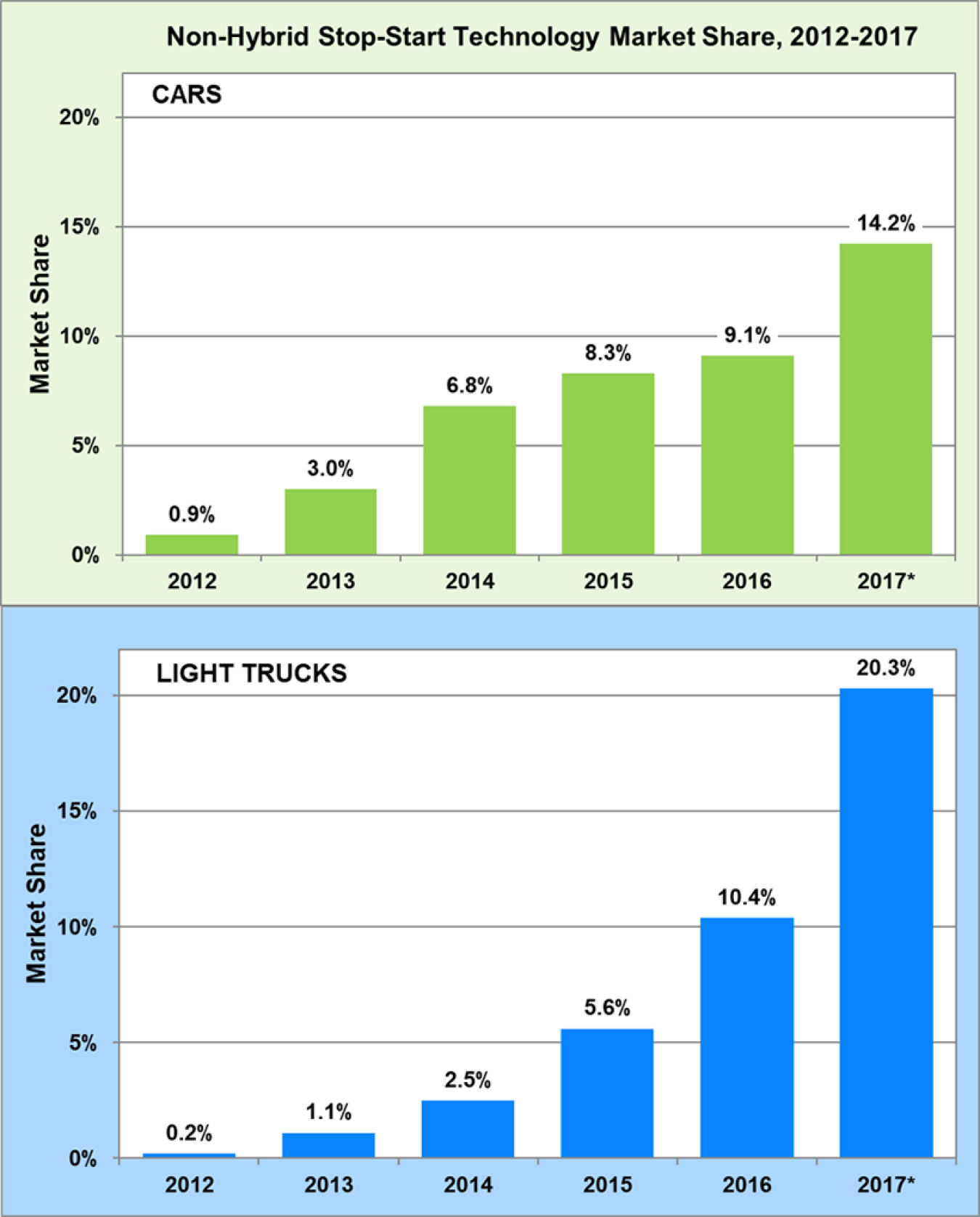In recent years, manufacturers have begun installing stop-start systems in non-hybrid vehicles to reduce engine idle time.
February 19, 2018Stop-start systems have been used on hybrid vehicles since hybrids were first introduced almost 20 years ago. In recent years, manufacturers have begun installing stop-start systems in non-hybrid vehicles as well. A vehicle equipped with stop-start will shut down the engine when the vehicle is stopped and start the engine when the brake pedal is released to reduce engine idle time. This is particularly effective in city driving where brief but frequent stops are required due to traffic lights and congestion. The market penetration of non-hybrid stop-start systems on cars grew from 9.1% in 2016 to 14.2% in 2017 while light trucks nearly doubled, reaching 20.3% in 2017. Engines with stop-start technology have different architecture to prevent premature wear of engine components, including the starter. According to the Environmental Protection Agency, stop-start systems improve fuel economy by about 4-5%.

* Data for 2017 are preliminary, based on projected production data from the automakers.
Note: Includes only non-hybrid stop-start technology. The definition of cars and light trucks is the same definition as in the Corporate Average Fuel Economy rulemaking. Thus, the car category includes cars, station wagons, and small 2-wheel drive sport utility vehicles (SUV). The light truck category includes pickups, vans, minivans, 4-wheel drive SUV, and large SUV.
Sources: U.S. Environmental Protection Agency, Light-Duty Automotive Technology, Carbon Dioxide Emissions, and Fuel Economy Trends: 1975 Through 2017, EPA-420-R-18-001, January 2018.
U.S. Environmental Protection Agency, Green Vehicle Guide, Gasoline and Diesel Advanced Technology Vehicles website, accessed January 20, 2018.

